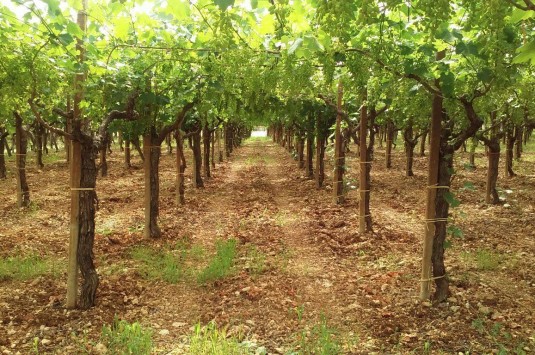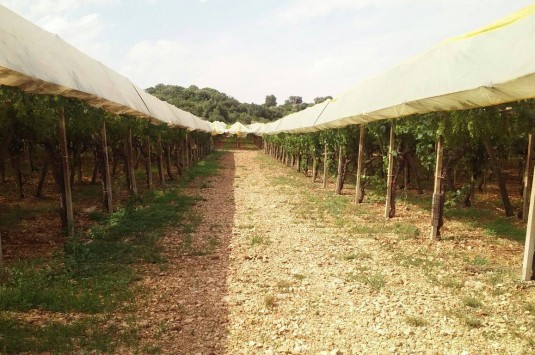Need a quote for your new vineyard? Contact our sales dipartment!
Spurred cordon
Spurred cordon is a vine training system in which 5 – 7 sprouts are chosen during winter pruning from which an equal number of spurs will be developed carrying two or three buds each. It is very easy to cultivate and is suitable for dry soils. The pruning is short and produces an average density, a well balanced production, good sun exposure of the leaves and allows mechanized pruning and harvesting. Spurred Cordon technique also allows to eliminate the binding of the grape tree after harvesting.
The main structure is constitued by strong poles, movable wires in couples, developing trees upwards therefore guaranteeing better sun exposure of the grapes.
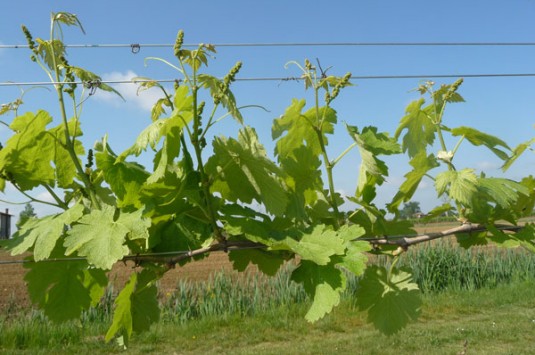
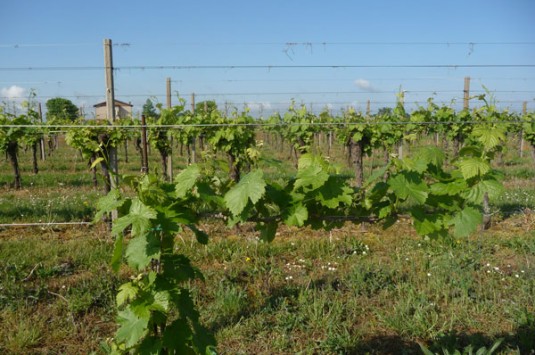
Free Cordon
This vine training technique is particularly suitable in highly mechanized vineyards. It is constitued by a single permanent wire placed at 120-150 cm height. The spurs grow upward and then fall downward due to the grapes’ weight. During pruning activities the upper spurs are priviliged in order to ease mechanical pruning and improve grape production. Managing this kind of training system is easier and less expensive since the installation is constitued by a single wire and supports. The poles installed are short and the weight of the structure is concentrated on the upper side.
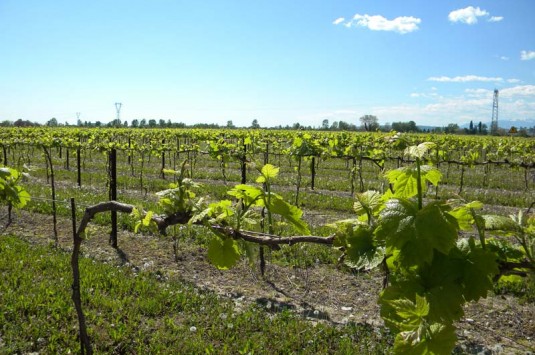
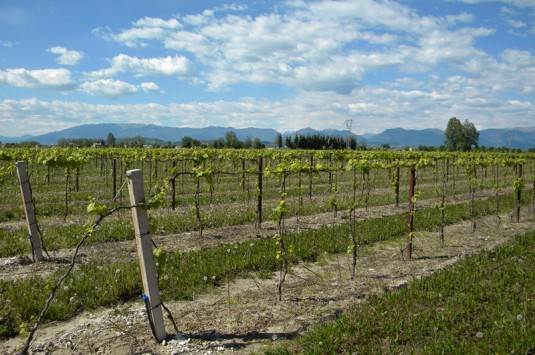
Geneva Double Curtain System
GDC training system is a double curtain growing technique based on the single curtain system. Pruning and harvesting can be fully mechanized. The concept aims to improve grape quality by reducing shade within a dense canopy, by dividing the mass of foliage into two. The trunk is grown high, about 1.5m. From this two permanent cordons grow, each one trained out to run along a supporting wire, approximately 1.3m apart. Along the cordon are the spurs that produce the fruiting canes, which hang down towards the ground. Hence the canopy has been divided into two ‘curtains’, improving exposure to light, quality of fruit and yield. It is particularly useful for vines of high vigour. The structure is very strong and requires movable cross arms.
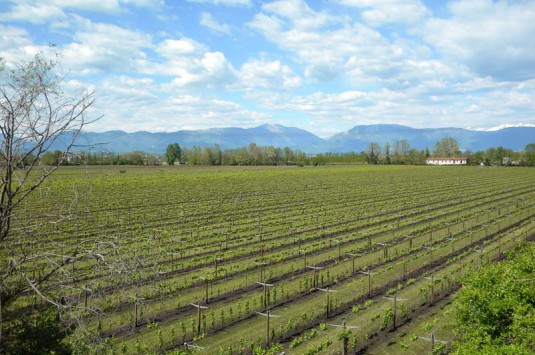
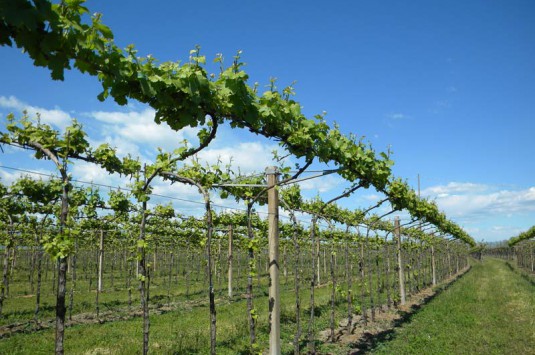
Guyot training system
In Single Guyot, each vine has one cane preserved each year, for the generation of next years many fruiting canes, and one spur, which is for the generation of the replacement cane. In Double Guyot, which is a system widely used in Bordeaux, each vine has two canes and two spurs, the canes being trained in opposite directions along wires. Pruning operations are not suitable for mechanization, yet this training system guarantees higher quality control on the grapes and cane selection. The structure uses standard poles with supporting wires.
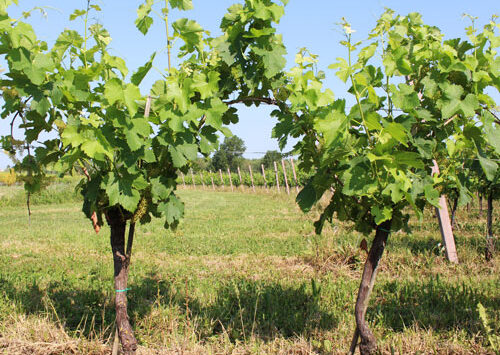
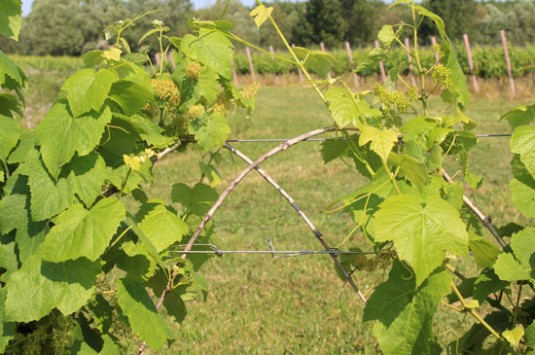
Sylvoz training system
Sylvoz training system, widely used in Veneto region, derives from Casarsa training technique which is used in Friuli and in cold-moist climate plains. These different systems has developed in order to better mechanize pruning and harvesting activities and lower wine growing costs. These are extensive plantations with long free canes and distant wine trees. In the Sylvoz variation of Casarsa the canes are binded on the lower wire, two or three buds are left for the following year.
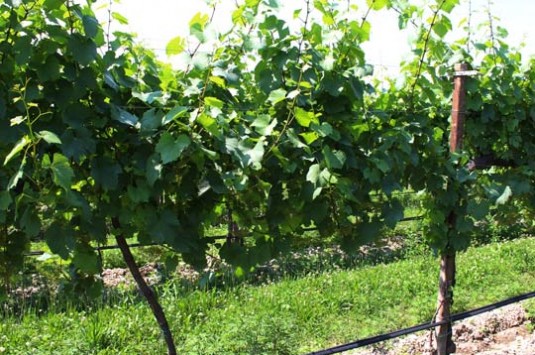
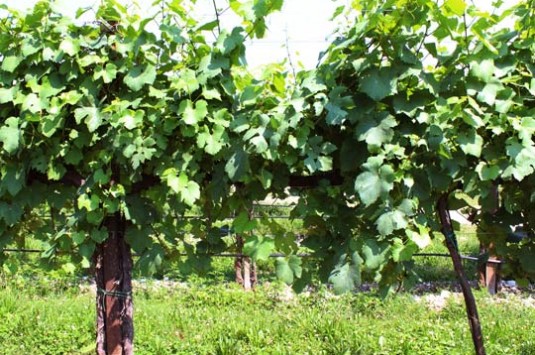
Tendone system
Also known as Italian Pergola Trellis, this system is widely employed in southern Italy and has a high grape production. It requires abundant irrigation to satisfy the voluminous development of the trees. Each wine tree is two meter high, four fruit bearing branches originate from the top and are sustained by a sunburst of wires and poles. Trees are planted at 4×4 m or 2×2 m distance according to the plot. Poles are installed at each corner, strong lateral poles and intermediate poles near each vine tree.
